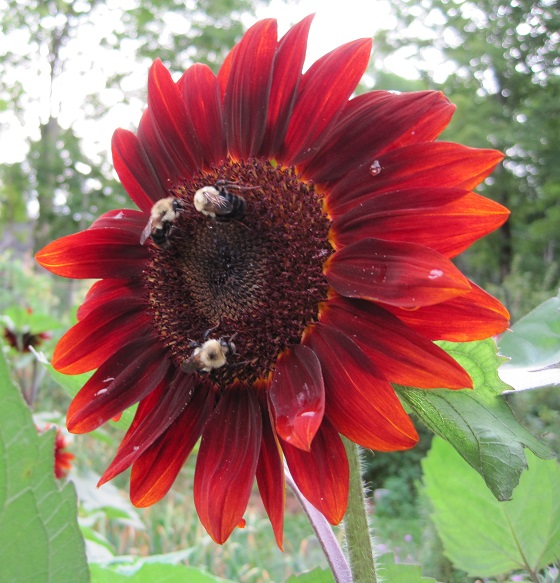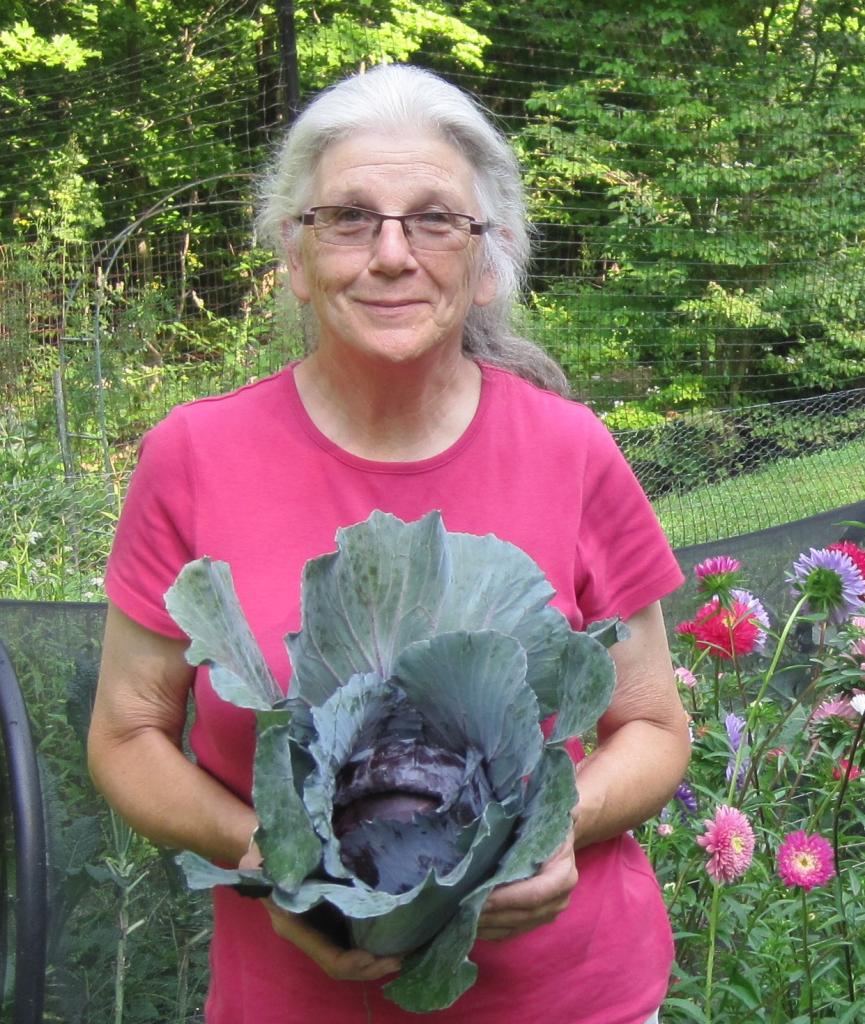A quintessential summer flower, the sunflower has so many amazing uses—from cooking to crafts! They are not only pretty, but also entirely edible! See lots of great ways to make the most of sunflowers.
A Pretty Native American Plant
Honored as the state flower in both Kansas and Nebraska, there are about 70 species of sunflowers. Most are native to the Great Plains, Mexico, and Peru.
The Hopi people, who traditionally believed that the sunflower warmed the earth and brought rain, carved wooden sunflowers as sacred objects to help enrich their harvests. They used the seeds for food, ground them into meal and flour, and used the oil for cooking, as a salve, to soften leather, and as a hair conditioner. The stems provided fiber for making cords and rope and the leaves were smoked like tobacco. They even bred a purple-seeded variety to use for dye.
Ethnobotanists think the sunflower may have predated other Mesoamerican crops such as corn, beans, and squash. Sunflower seeds and oil were important crops for the Incas in Peru who created images of the sunflower out of gold. The Spanish brought sunflowers back to Europe with them in the 16th century where they were viewed more as a curiosity than as a food plant. In Russia they recognized the importance of sunflowers as a major oilseed crop and by the 18th century they grew them in abundance.
One of the most interesting qualities of the sunflower is their heliotropism—they turn to face the sun as it travels across the sky. Many flowers have this tendency to move toward the sun but in sunflowers it is very pronounced, In the morning, when the plant is in bud, it faces east. During the day motor cells in the stem tilt the bud to follow the course of the sun across the sky so that it receives maximum sunlight. By evening it will be facing west. Overnight it goes back to the east awaiting the rising sun. Researchers have found that even if the buds are removed, the bare stem will still track the sun. Once the flowers have opened completely, they stop moving and face east.

A Practical Plant With Many Uses!
Sunflowers are edible from flower to leaf to root! Just make sure your flowers are raised without chemicals if you’re going to indulge!
Sunflower Oil
Sunflowers continue to be an important oilseed crop worldwide. Many of them are used for birdseed but most are processed into vegetable oil. The green stalks are chopped like silage and used as cattle feed. The seeds and green foliage are favorite foods of many birds, mammals, insects, and butterflies.
If you grow your own black sunflower seeds, you can collect the oil, too! It’s great for both salad dressings and frying foods.
- Just harvest the seeds when mature, peel them, and blend into a paste in the food processor. Add 2 tablespoons of water to the paste and blend, and one or two more tablespoons (slowly) until it’s a paste (but be careful not to add too much water!). Pour the paste into a bowl.
- Massage the paste with your hands until oil flows out easily.
- Get a second bowl. Keep squeezing the paste with your hands until you’ve extracted all of the oil. Then put the oil through a sieve.
Store oil in an air-tight container in the refrigerator. It will last a month.

Sunflower Seeds
Of course, humans love the seeds too, when we can beat the birds to the harvest. The tasty seeds contain calcium, phosphorus, a wealth of vitamins, and unsaturated fatty acids.
While sunflower seeds are often sold in stores, it’s easy to make your own. To collect them before the birds and other seed-loving critters, cover the ripening head with a loose-fitting paper bag. They are ready for harvest when the petals wilt, the seeds turn brown, and the backside of the flowerhead turns yellow. When the seeds are fully ripe, rub two flowerheads together to loosen the seeds. Be sure to leave a few heads in the garden for the birds.
You can eat sunflower seeds raw or roast them on a cookie sheet in a 300-degree oven for 30 or 40 minutes until golden. Be sure they’re in one layer and stir occasionally. When done, eat “as is” or add a teaspoon of melted butter with a cup of seeds and add your favorite seasoning. See steps on how to harvest and prepare sunflower seeds.
Sunflower Petals, Leaves, and Stalks
One of the many edible flowers, sunflowers have colorful petals that can be used in salads or as a pretty garnish. And the greens can be used in the salad, too, or even sauteed like spinach or baked into chips like kale! The leaves can also be steeped to make an healthy tea. Even the stalks can be eaten, similar to celery, as a crunchy snacks or as a carrier for dips and peanut butter!
Sunflower Shoots and Roots
Ever enjoyed alfalfa or soybean sprouts? Sunflower sprouts can be used the same way in both salads and sandwiches. The shoots add a fresh, slightly nutty flavor.
If you grow a species of sunflower called “Jerusalem artichoke” or “sunroot,” you can also eat the roots. Sunchokes can be sliced into salads, shredded into slaw, fried into fritters, roasted, steamed, or mashed with potatoes.
.jpg)
Sunflower Crafts
Sunflowers aren’t just useful in the kitchen; they’re great for crafts both outside and inside!
You can make a wonderful bird feeder wreath with dried sunflower heads!
Or see how to create a sunflower house in the garden!
Sunflowers also make wonderful cut flowers in a vase to beautify the home. They have big heads so we recommend that you cut the stems so that the heads are about 1 to 3 inches above the rim of the container. Be sure to remove leaves below the waterline, and change out the water every 2 to 3 days.
Growing Sunflowers
Easy to grow, sunflowers are more popular now than ever. Open any seed catalog and you’ll find two or three pages devoted exclusively to sunflowers. Along with the tried and true heirloom varieties there are lots of “new and improved” ones. They are available in a wide range of colors from white to black and sizes from 16 foot tall giants to 18 inch high dwarfs. Some grow as a single stem while others are multi-branching. There are even double-flowering ones with multiple petals. If you don’t already grow sunflowers, put them on your list for next year.
Learn more in our Sunflower Growing Guide.




.jpg)








